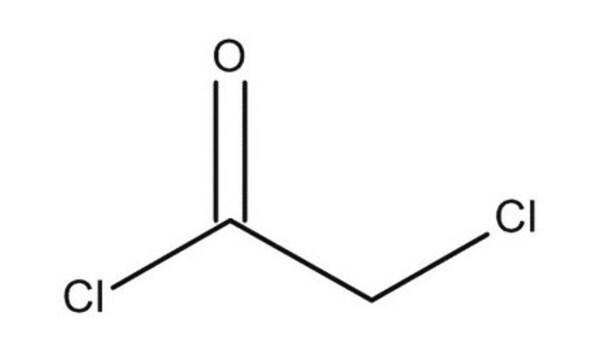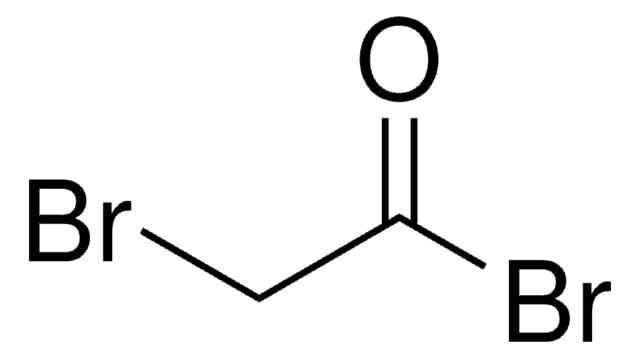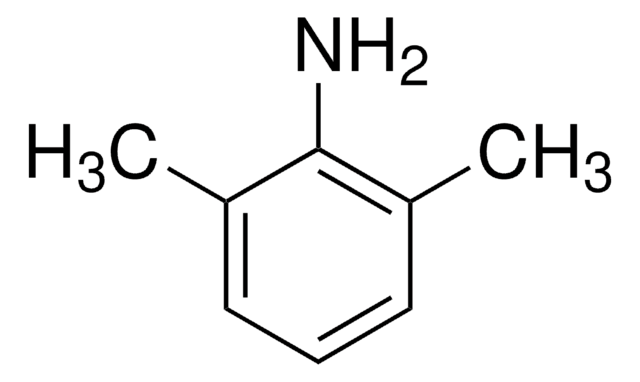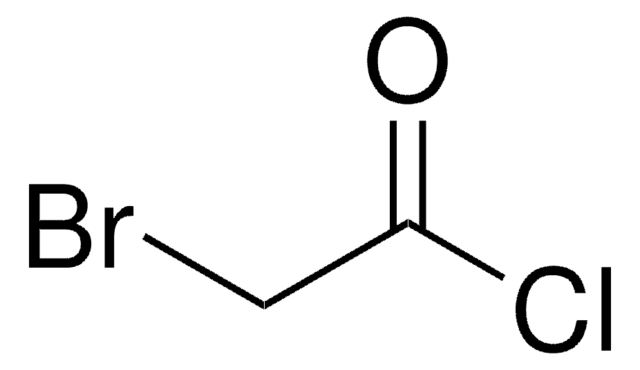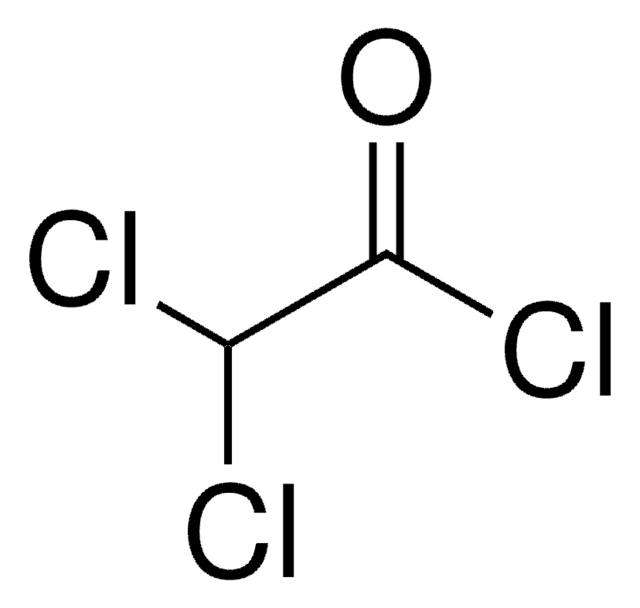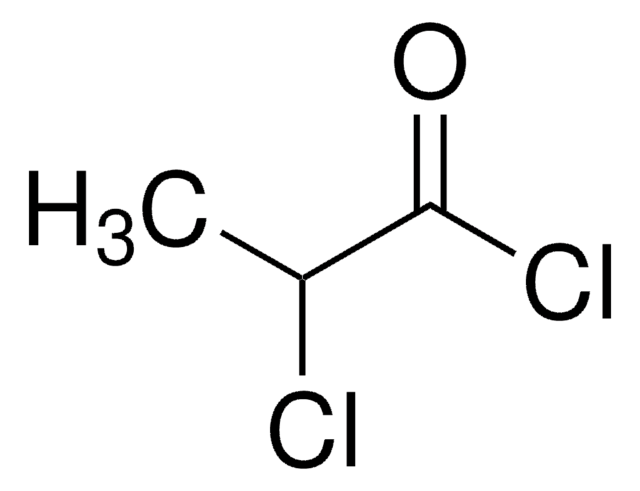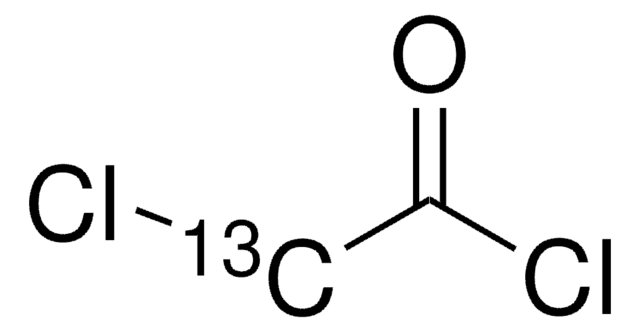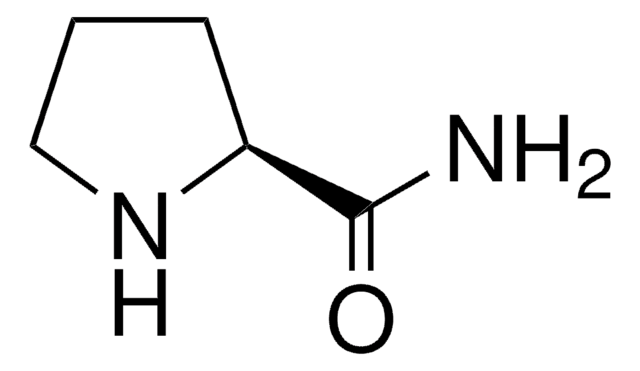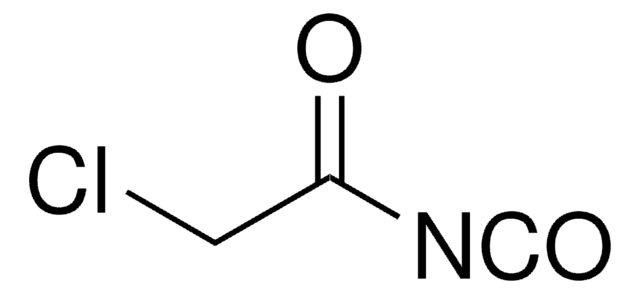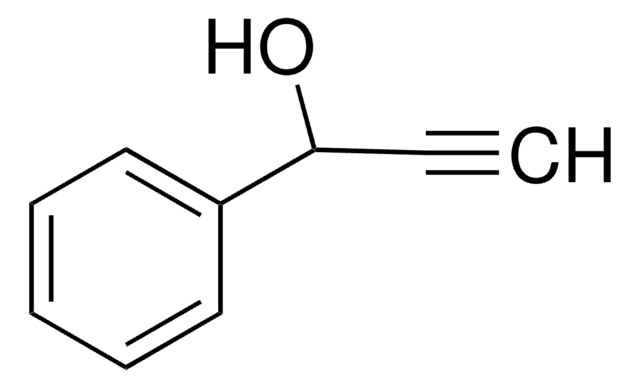Kluczowe dokumenty
104493
Chloroacetyl chloride
98%
Synonim(y):
Chloroacetic chloride
About This Item
Polecane produkty
gęstość pary
3.9 (vs air)
Poziom jakości
ciśnienie pary
60 mmHg ( 41.5 °C)
Próba
98%
współczynnik refrakcji
n20/D 1.453 (lit.)
bp
105-106 °C (lit.)
mp
−22 °C (lit.)
gęstość
1.418 g/mL at 25 °C (lit.)
grupa funkcyjna
acyl chloride
chloro
ciąg SMILES
ClCC(Cl)=O
InChI
1S/C2H2Cl2O/c3-1-2(4)5/h1H2
Klucz InChI
VGCXGMAHQTYDJK-UHFFFAOYSA-N
Szukasz podobnych produktów? Odwiedź Przewodnik dotyczący porównywania produktów
Powiązane kategorie
Opis ogólny
Chloroacetyl chloride causes the acylation of cyano-pyrazoline during the synthesis of secondary amine-substituted cyano-pyrazoline derivatives.
Zastosowanie
Hasło ostrzegawcze
Danger
Zwroty wskazujące rodzaj zagrożenia
Zwroty wskazujące środki ostrożności
Klasyfikacja zagrożeń
Acute Tox. 3 Dermal - Acute Tox. 3 Inhalation - Acute Tox. 3 Oral - Aquatic Acute 1 - Eye Dam. 1 - Skin Corr. 1A - STOT RE 1
Organy docelowe
Lungs
Zagrożenia dodatkowe
Kod klasy składowania
6.1A - Combustible acute toxic Cat. 1 and 2 / very toxic hazardous materials
Klasa zagrożenia wodnego (WGK)
WGK 3
Temperatura zapłonu (°F)
212.0 °F - closed cup
Temperatura zapłonu (°C)
100 °C - closed cup
Środki ochrony indywidualnej
Faceshields, Gloves, Goggles, type ABEK (EN14387) respirator filter
Wybierz jedną z najnowszych wersji:
Masz już ten produkt?
Dokumenty związane z niedawno zakupionymi produktami zostały zamieszczone w Bibliotece dokumentów.
Klienci oglądali również te produkty
Nasz zespół naukowców ma doświadczenie we wszystkich obszarach badań, w tym w naukach przyrodniczych, materiałoznawstwie, syntezie chemicznej, chromatografii, analityce i wielu innych dziedzinach.
Skontaktuj się z zespołem ds. pomocy technicznej
